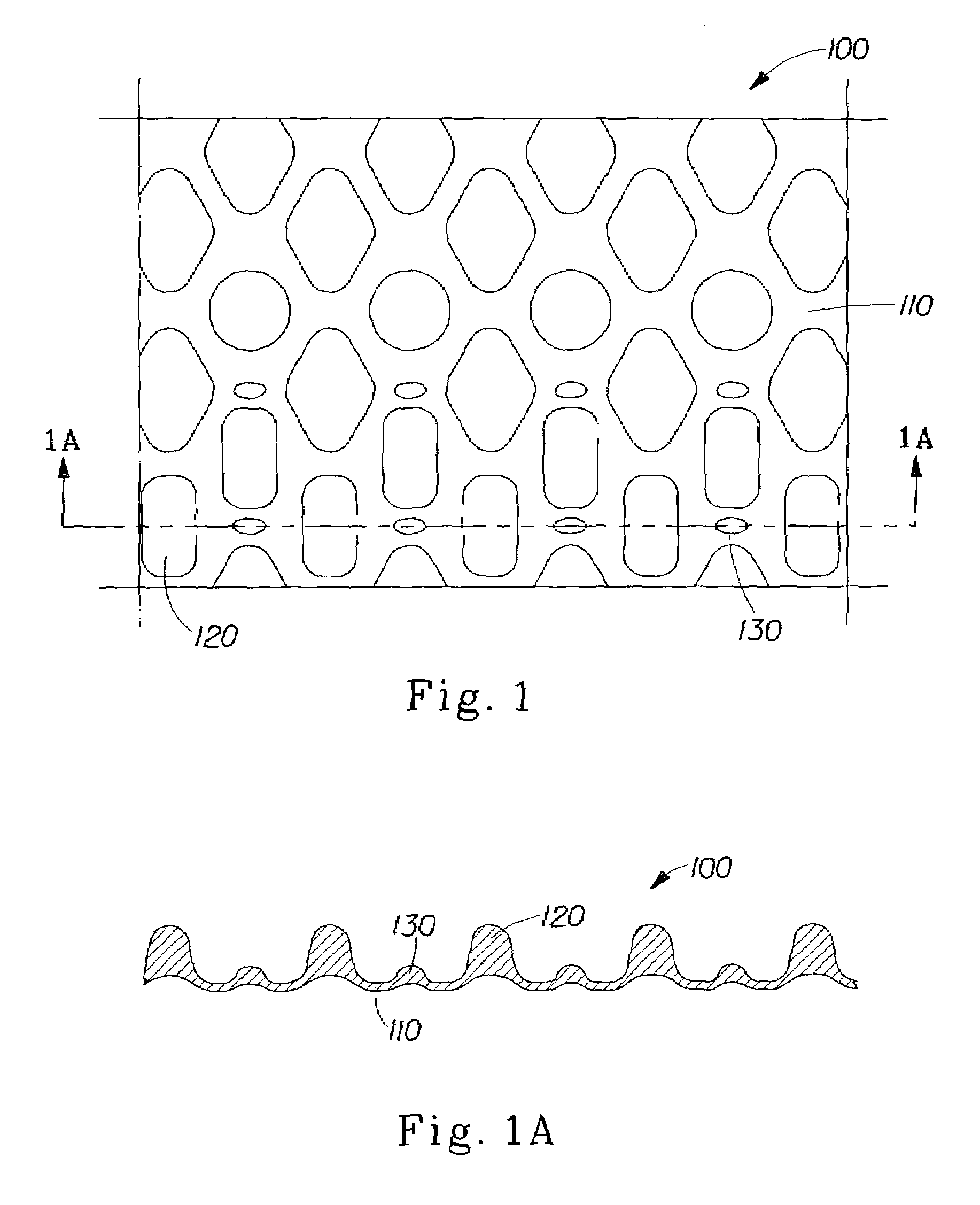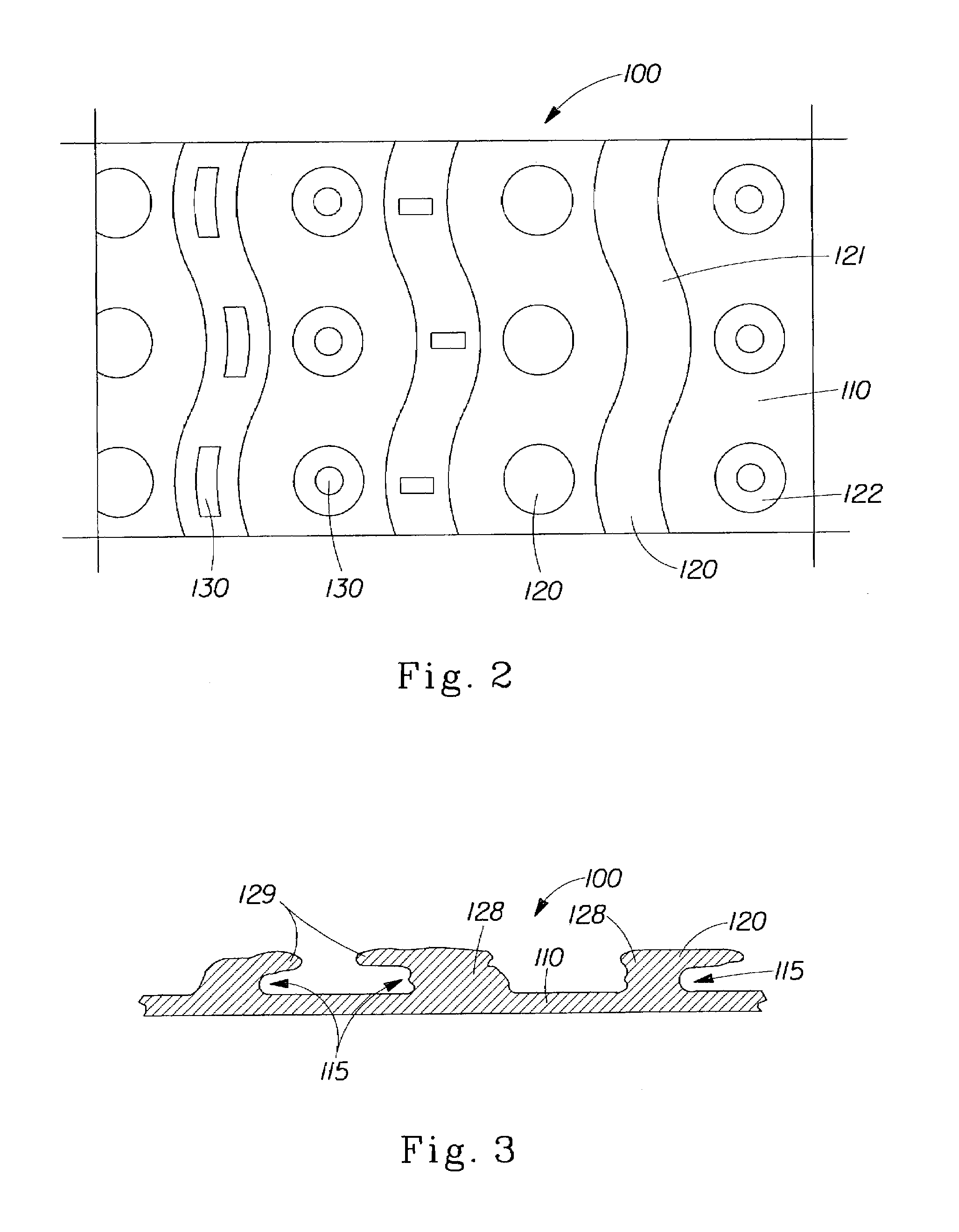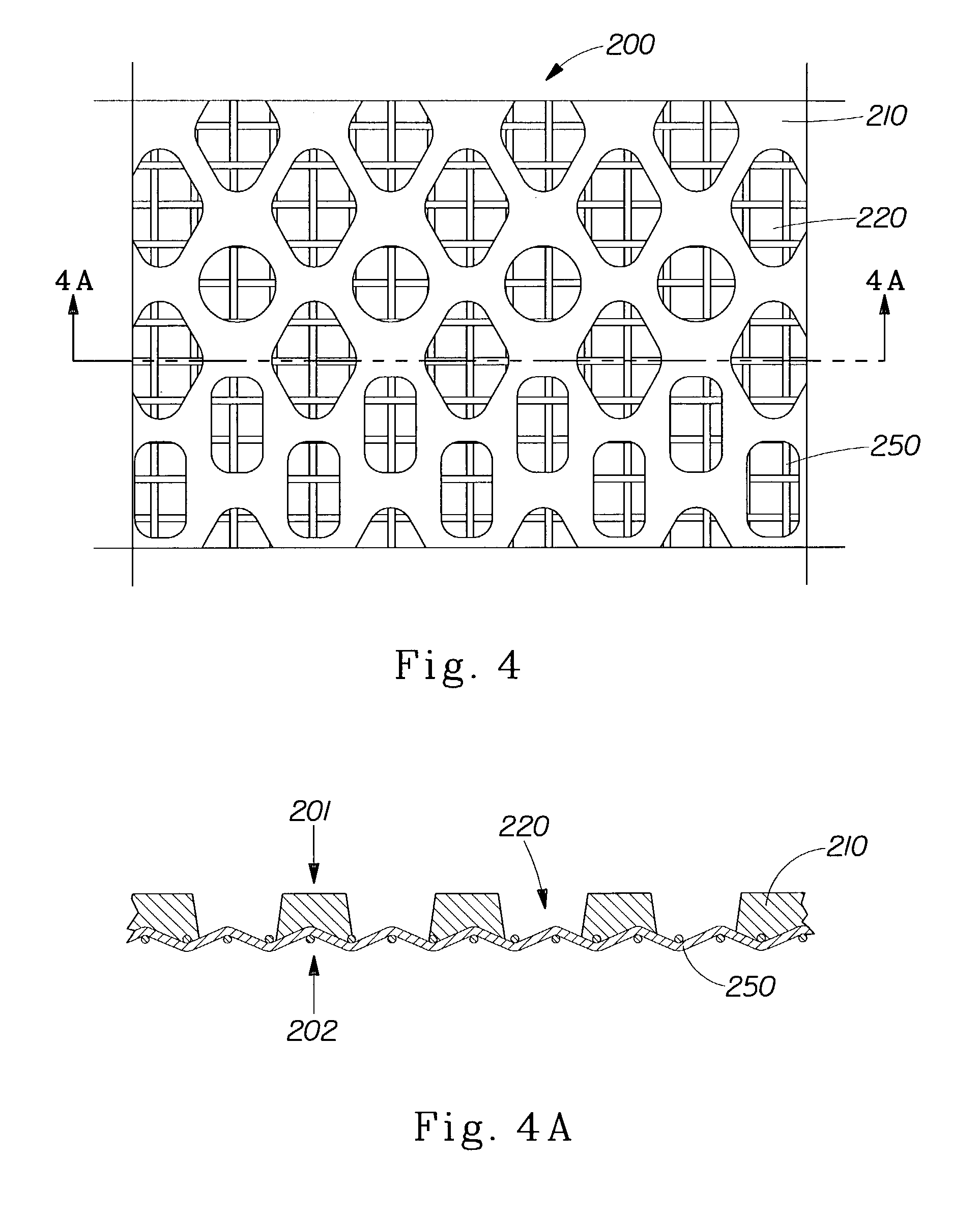Electro-spinning process for making starch filaments for flexible structure
a technology of flexible structure and electro-spinning process, which is applied in the direction of manufacturing tools, electric/magnetic/electromagnetic heating, wire tools, etc., can solve the problems of significant pollution problems, difficulty for manufacturers, and economic loss
- Summary
- Abstract
- Description
- Claims
- Application Information
AI Technical Summary
Benefits of technology
Problems solved by technology
Method used
Image
Examples
Embodiment Construction
[0052]As used herein, the following terms have the following meanings.
[0053]“Flexible structure comprising starch filaments,” or simply “flexible structure,” is an arrangement comprising a plurality of starch filaments that are mechanically inter-entangled to form a sheet-like product having certain pre-determined microscopic geometric, physical, and aesthetic properties.
[0054]“Starch filament” is a slender, thin, and highly flexible object comprising starch and having a major axis which is very long, compared to the fiber's two mutually-orthogonal axes that are perpendicular to the major axis. An aspect ratio of the major's axis length to an equivalent diameter of the filament's cross-section perpendicular to the major axis is greater than 100 / 1, more specifically greater than 500 / 1, and still more specifically greater than 1000 / 1, and even more specifically, greater than 5000 / 1. The starch filaments may comprise other matter, such as, for example water, plasticizers, and other opt...
PUM
| Property | Measurement | Unit |
|---|---|---|
| extensional viscosity | aaaaa | aaaaa |
| viscosity | aaaaa | aaaaa |
| extensional viscosity | aaaaa | aaaaa |
Abstract
Description
Claims
Application Information
 Login to View More
Login to View More - R&D
- Intellectual Property
- Life Sciences
- Materials
- Tech Scout
- Unparalleled Data Quality
- Higher Quality Content
- 60% Fewer Hallucinations
Browse by: Latest US Patents, China's latest patents, Technical Efficacy Thesaurus, Application Domain, Technology Topic, Popular Technical Reports.
© 2025 PatSnap. All rights reserved.Legal|Privacy policy|Modern Slavery Act Transparency Statement|Sitemap|About US| Contact US: help@patsnap.com



